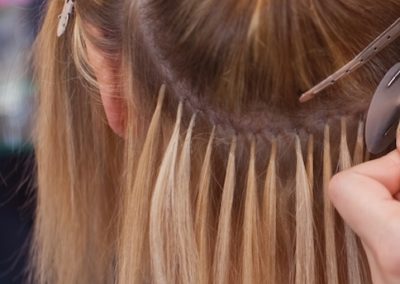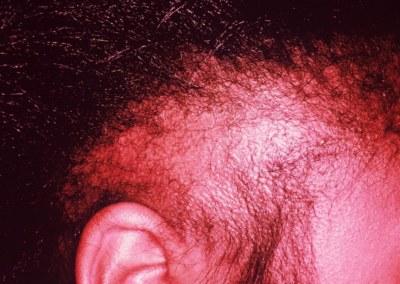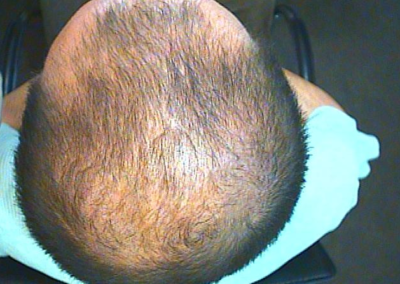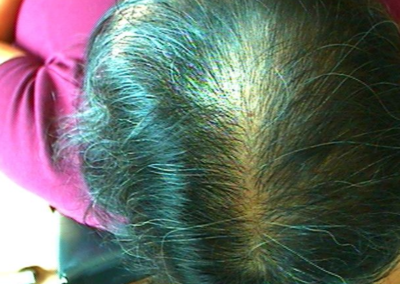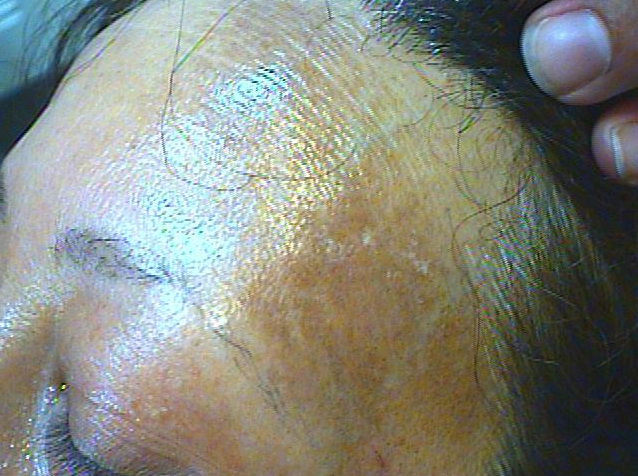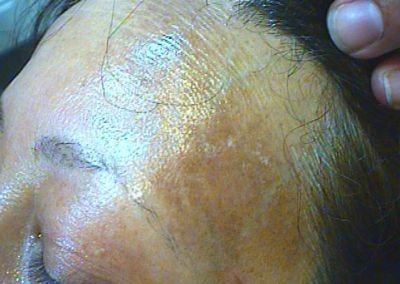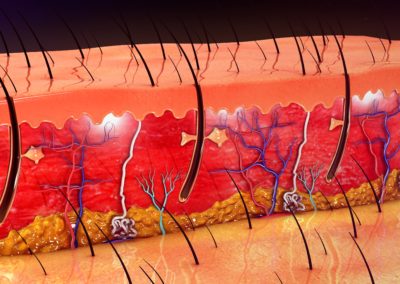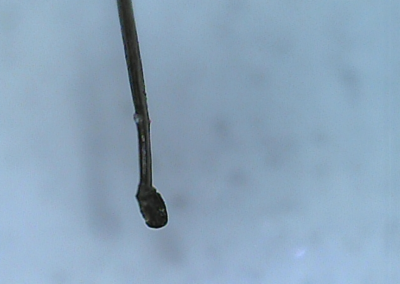
Traction Alopecia
Traction alopecia is commonly caused by either mechanical or chemical stress on the hair follicles.
Common hair styling practices may be putting your hair at risk. Even something as simple as a pony tail!
Tightly pulling hair in the same direction for long periods of time can cause traction alopecia.
This can be due to tightly pulled braids, dreadlocks and pony tails.
The strain on the hair traumatises the follicle and can pull the hair out at the root. Irritation, itching or infection may be experienced by some people.
The hair will gradually get thinner in the effected area and overtime may not be able to recover and grow back.
In traction alopecia, usually just the hair that’s been pulled is affected in comparison to other types of alopecia which can vary in presentation.

Symptoms
In the early stages traction alopecia may present as little bumps on your scalp that look similar to pimples, broken hairs. The hairs at the front are often affected but this can depend on the hairstyle and the cause.
As well as hair loss, traction alopecia can cause other symptoms such as:
- redness of the scalp
- bumps
- itching
- soreness or stinging of your scalp
- inflammation of the hair follicles (folliculitis)
- scaling
Eventually, the hair follicles can become so scarred and damaged that they can no longer produce new hair.
Signs traction alopecia could be happening are:
- Receding hairline.
- Thinning behind the hairline.
- The hair is slowly getting thinner.
- Your part is widening.
- The distance between your eyebrows and hairline is increasing.

Traction alopecia can also be caused by chemical straightening/chemical hair relaxing.
Chemical straightening, or hair relaxing, is a hair straightening method which produces longer-lasting results than your everyday set of straightening irons
It involves chemicals that temporarily or permanently break the protein bonds in hair resulting in straight hair after the bonds are broken.
The chemicals used are very strong and potentially dangerous and they are applied very closely to the scalp. Incorrectly administered treatment together with these strong chemicals can leave the person at risk of chemical burn to the scalp which in turn can lead to infection, scarring and permanent hair loss (cicatricial alopecia).

